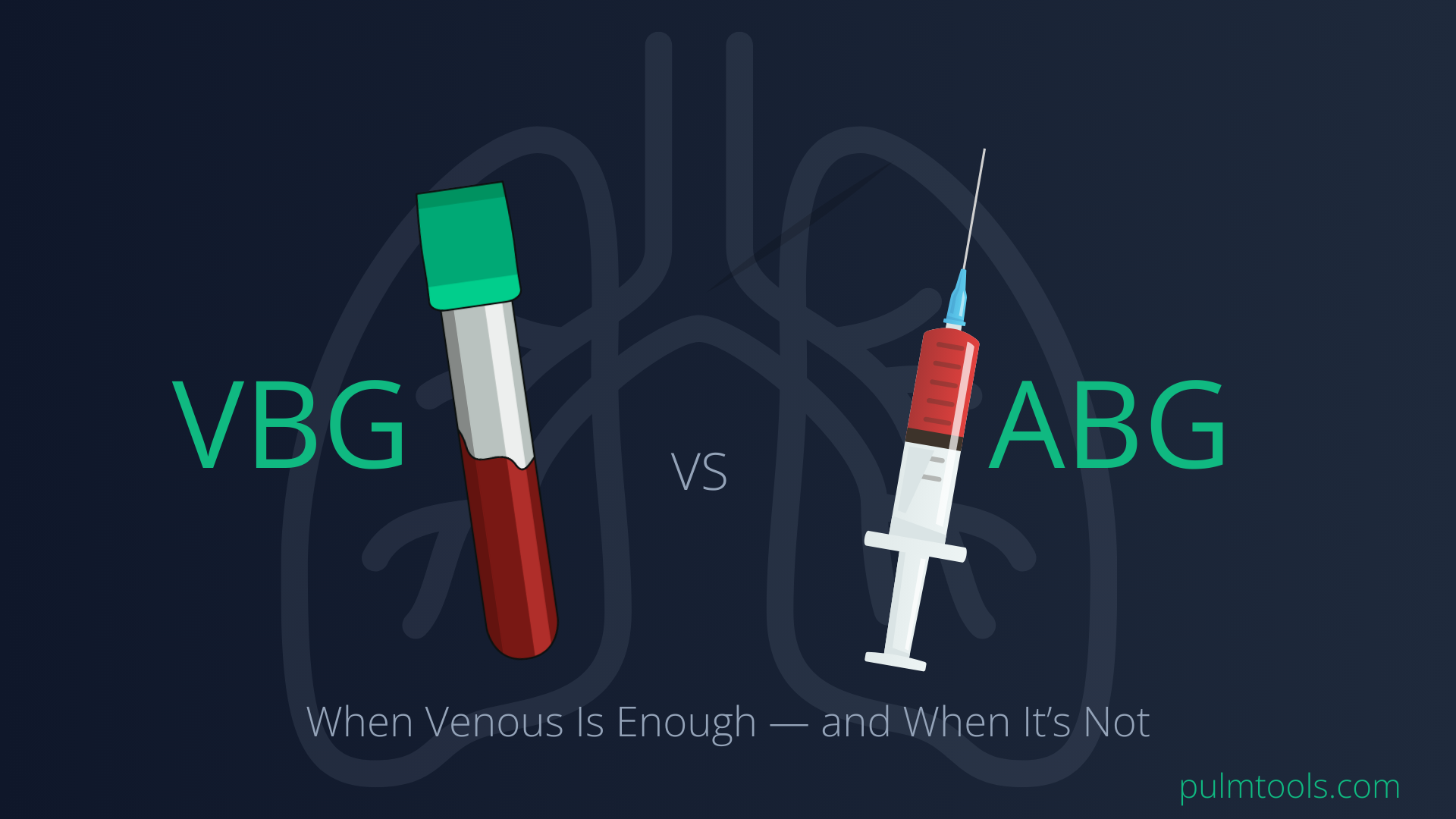
Acid–Base Basics
VBG vs ABG: When Venous Is Enough — and When It’s Not
Venous blood gases (VBG) are faster and less painful than arterial samples, and for many bedside questions they’re good enough. This guide explains what a VBG can reliably tell you, how to estimate arterial values when appropriate, and the red lines that still require an ABG.
Typical VBG Ranges
- pHᵥ 7.31–7.41
- PvCO₂ 41–51 mmHg
- HCO₃⁻ 22–29 mEq/L
PvO₂ ≈ 35–45 mmHg but is not used to determine oxygenation adequacy.
VBG vs ABG: What Each Tells You
| Question | Use VBG? | Use ABG? |
|---|---|---|
| Acid–base screening (pH/CO₂) | ✔️ Yes — good agreement | — |
| Trend pH/CO₂ after interventions | ✔️ Yes — practical and fast | — |
| Oxygenation (PaO₂, A–a, PaO₂/FiO₂) | ❌ No — PvO₂ not reliable | ✔️ Yes — ABG required |
| Precise ventilator changes | ⚠️ Sometimes | ✔️ Often needed |
| Shock/low-flow states | ⚠️ Variability increases | ✔️ Prefer ABG |
Estimating Arterial Values from a VBG
Rules of thumb used in VBGenius (educational only):
- pH: pHₐ ≈ pHᵥ + ~0.03
- CO₂: PaCO₂ ≈ PvCO₂ − ~4–6 mmHg (wider spread in low-flow/peripheral draws)
- HCO₃⁻: typically similar between VBG and ABG
Use estimates for learning or quick screening — confirm with ABG when results will change management.
When You Must Get an ABG
- Assessing oxygenation (PaO₂, A–a gradient, PaO₂/FiO₂)
- Starting or making significant changes to ventilator settings
- Shock, severe hypoxemia, or rapidly changing clinical status
- When VBG and the clinical picture don’t match
Practice Tools
FAQ
Is a central VBG better than a peripheral VBG?
Central samples often track arterial CO₂ a bit more closely, but variability still exists in low-flow states. If results will change management, obtain an ABG.
Can VBG assess oxygenation?
No. PvO₂ is not a surrogate for PaO₂. Use ABG (plus pulse ox/FiO₂) to evaluate oxygenation and shunt.